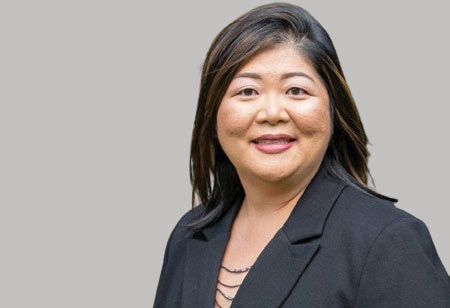

Thank you for Subscribing to Agri Business Review Weekly Brief

Chengboey Lau built her expertise in food safety, quality systems and cross-cultural leadership through roles at Coca-Cola, Firmenich, Mondelēz and Kerry. These experiences shaped her ability to lead diverse teams, drive operational excellence and build strong quality cultures and skills that she now brings to her role at Kellanova across the AMEA region.
My Journey: In Shaping quality and food safety Over the past 25+ years, my journey has been defined by a deep commitment to building resilient, future-ready quality and food safety systems across diverse markets. A pivotal moment was early on in my career when I was the site quality manager for a consumer brand: to know what I do at work everyday has an immediate and direct impact to what my family consumes in the market. . . That was the aha moment that defined my career – that I will be the protector of the brand and the food that my company produces. At Kellanova, I’ve had the privilege of reshaping the QFS function across multiple geographies in AMEA, aligning it with our growth strategy while improving consumer feedback and significantly improving supplier risk profiles. What fuels my commitment is the belief that quality and food safety are not just compliance measures, they are strategic levers for trust, brand equity and sustainable growth. Balancing Global Consistency: Through Cohesive Quality Culture Leading across North America, APAC and the Middle East has taught me that while standards must be consistent, culture must be respected. I approach this by establishing a strong global framework—anchored in science and risk management—while empowering local teams to adapt practices in ways that resonate with their cultural and operational realities. For example, in AMEA, we’ve built regional quality councils and local champions who drive engagement and accountability. This decentralized ownership, combined with centralized governance, ensures that our quality culture is both unified and inclusive. One of the big initiatives we are driving is around food safety culture and how we measure it. While we carry out food safety culture surveys (measurement) in local languages, they are benchmarked against the local markets and other food industry in their markets, so that the measurements are relevant. In addition, I don’t prescribe the food safety action plans aside from the “big bucket items” like the non-negotiable (every location market to have a local rewards/recognition program) but leave it to local markets to implement what is relevant to motivate their team in their culture. Strategy and Collaboration: Future-proofing food safety Staying ahead requires a proactive, systems-thinking approach. At Kellanova, we’ve implemented a 3-year QFS strategy that are based on the 4 pillars to deliver the BEST strategy together: B-build capability, E-enable business growth, S- strong food safety and sanitation standards and T-Trusted partner internally and externally. This allows us to anticipate changes and act swiftly. Collaboration is the engine of innovation. Cross-cultural collaboration brings diverse perspectives that challenge assumptions and spark creativity. Whether it’s working with regulators in the U.S. or suppliers in Southeast Asia, I’ve seen firsthand how collaboration accelerates progress. Words of Wisdoms: Follow the 3P’s My advice is grounded in three principles: • Lead with purpose: Quality and food safety protect lives. Let that responsibility guide your decisions and inspire your teams. • Be a change agent: Embrace technology, challenge the status quo and drive transformation with empathy and clarity. • Invest in people: Technical excellence matters, but it’s people who drive culture. Build diverse, empowered teams and lead with authenticity. A global career in this field is both challenging and deeply rewarding. Stay curious, stay grounded and never lose sight of the consumer at the end of the value chain.